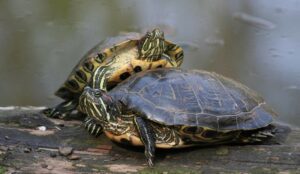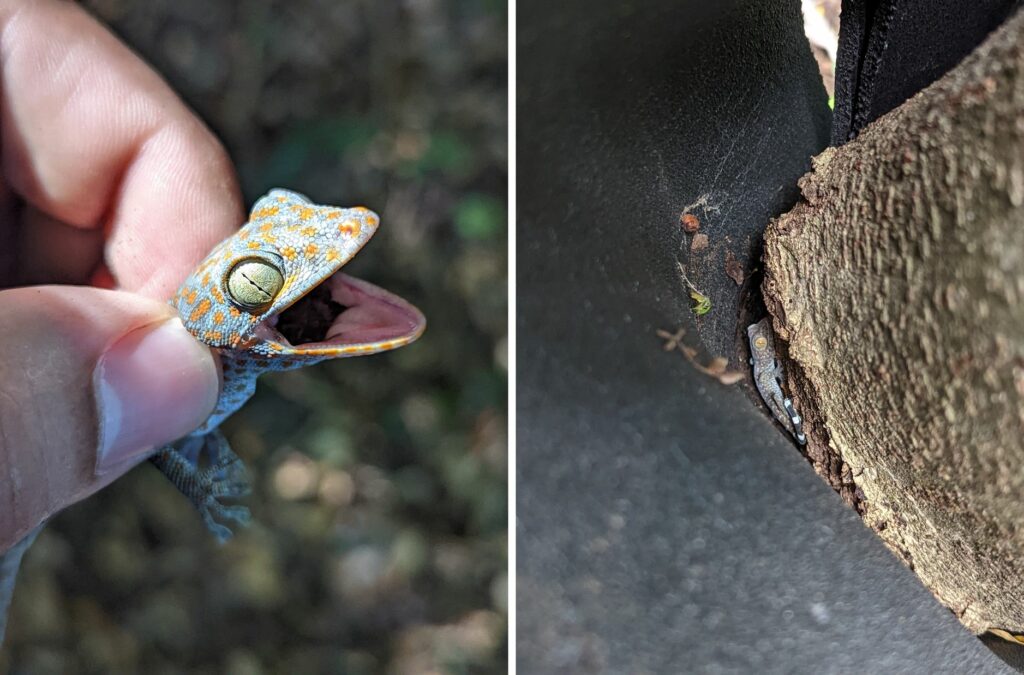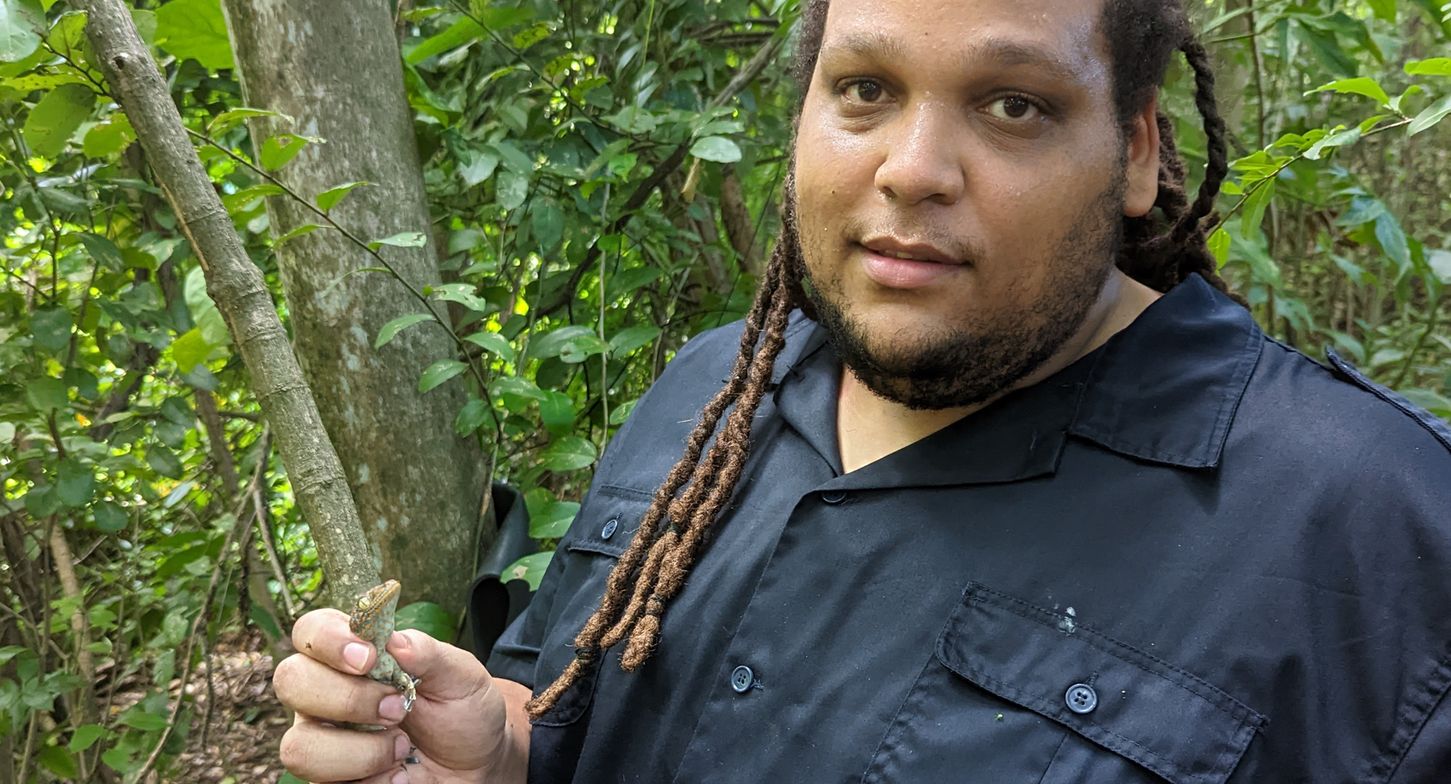Invasive alien species represent a major threat to island biodiversity. Many species of reptiles, recently arrived or established for a long time, can negatively impact the populations of local and sometimes endemic species from several territories of the Caribbean.
Our MERCI project (Managing Exotic Reptiles on Caribbean Islands) aims to better understand the impact of these species on the native fauna of the Lesser Antilles. Several missions have already been carried out to set up a rigorous scientific protocol based on complementary methods. The last mission was conducted in Martinique last November by Christopher Cambrone, scientific coordinator of the project, to continue the study of invasive freshwater turtles and to conduct preliminary experiments on geckos.

Trachemys scripta © Laurent Lebois
The Yellow-bellied slider turtle (Trachemys scripta), native to the United States, is invasive in many parts of the world, including the Caribbean. During a previous mission in Martinique whose main role was to set up a program to monitor turtles using camera traps (read the article), more than twenty individuals were captured. Back in Martinique, Christopher went to the Ifremer, a research institute specializing in maritime science, to proceed with the dissection of these individuals. The digestive tracts were collected and brought back to Guadeloupe. Molecular analyses will be conducted to identify the food consumed by the turtles, and therefore to better understand their impact on local biodiversity in terms of predation and competition. To complete the knowledge on the characteristics of these animals outside their native territory, liver samples were also taken. They will be used to identify possible parasites and pathogens likely to affect the turtles.
The mission does not stop there: Christopher also worked on the tokay gecko (Gekko gecko), another invasive reptile native to Asia. In September, Kévin Urvoy, who works on Invasive Alien Species at the OFB (French Office for Biodiversity), had set up dozens of artificial shelters, distributed in both urban and peri-urban areas. Inspection of shelters will reveal the preferences of these geckos in terms of environment. Christopher was able to confirm the effectiveness of the shelters by observing many individuals hiding in them. He has also developed a capture technique specifically adapted to this animal, with the aim of carrying out the same analyses as for turtles. These captures will be made during a next mission, scheduled for early 2023. In the meantime, the analyses of the samples and data already collected continue to reveal their secrets on these species as charismatic as they are problematic.

Tokay gecko in an artificial shelter.
The MERCI project is co-financed by the INTERREG Caribbean program under the European Regional Development Fund.




